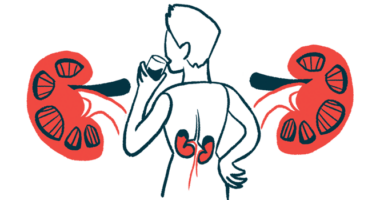1st reported use of Natpara in early pregnancy detailed in case study
Therapy found safe for US woman with hypoparathyroidism and her children

Use of Natpara (recombinant human parathyroid hormone) during early pregnancy and breastfeeding did not lead to significant adverse events for a woman with hypoparathyroidism or her two children, according to a recent case report from the U.S.
The therapy’s safe use during pregnancy or while breastfeeding has not been established, and this report is believed to be the first addressing such concerns, according to the scientists.
Still, “while this patient and her two children are overall doing well, further data are needed regarding the safety of [Natpara] in pregnancy and lactation,” they wrote.
Importantly, Natpara was recalled in the U.S. in 2019 due to issues with its delivery device, and has since been available only to select patients via a special use program. This woman’s use of the therapy occurred prior to its recall. Takeda, its marketer, has announced plans to discontinue global manufacturing by the end of 2024 due to ongoing supply issues.
The study, “Use of rhPTH(1-84) for hypoparathyroidism during early pregnancy and lactation,” was published in Endocrinology, Diabetes & Metabolism Case Reports.
Treating hypoparathyroidism during pregnancy
Hypoparathyroidism is marked by low levels of parathyroid hormone (PTH), a critical regulator of the calcium-phosphorous balance. It leads to low calcium, or hypocalcemia, and high phosphorous levels in the bloodstream.
Calcium and vitamin D supplements, which work to increase calcium absorption, are the disease’s mainstay treatments. If patients don’t respond well enough, PTH replacement also may be used. As its name suggests, a replacement therapy aims to provide people with the hormone they lack.
Natpara is the only PTH replacement therapy approved to date for hypoparathyroidism, with U.S. clearance in 2015 and European clearance, under the brand name Natpar, in 2017.
During pregnancy, levels of calcium and calcitriol — the active form of vitamin D — fluctuate, leading to changing calcium and vitamin D supplement requirements for all women, especially those with hypoparathyroidism.
Natpara’s prescribing label notes that there aren’t enough data to determine if it is safe to use during pregnancy or breastfeeding. As such, discontinuation of the therapy is recommended in published guidelines, according to the authors.
Woman gave birth to 2 healthy children after early use of Natpara
In the report, a pair of scientists described what is believed to be the first recorded case of a woman who was treated with Natpara during early pregnancy and breastfeeding.
She had developed hypoparathyroidism in 2005 at the age of 28 after undergoing surgery to remove her thyroid gland. That surgery was due to the presence of a goiter, or thyroid enlargement.
Her blood calcium levels were not well controlled with calcium and calcitriol supplements in the following years, prompting the start of treatment with Natpara in 2015. The therapy enabled her to reduce the dose of calcium supplements and discontinue calcitriol.
She discontinued Natpara in 2018 at age 40, about five weeks into her first pregnancy, and her calcium and calcitriol doses were adjusted back up.
After giving birth to a healthy girl, the woman developed high blood pressure, known as preeclampsia, and elevated blood calcium levels, which prompted her to restart Natpara while breastfeeding.
The baby’s blood calcium levels were slightly elevated about a week after birth, but normalized in the following weeks. The mother stopped breastfeeding about six months postpartum.
Eight months after giving birth, the woman discovered she was pregnant again and opted to continue Natpara treatment, despite guidelines recommending discontinuation. However, the U.S. recall of Natpara occurred 15 weeks into the pregnancy, so she stopped the replacement therapy and again increased her calcium and calcitriol intake.
After giving birth to a healthy boy in 2020, the woman again experienced preeclampsia and elevated calcium levels, prompting readmission to the hospital for two more days.
While this patient and her two children are overall doing well, further data are needed regarding the safety of [Natpara] in pregnancy and lactation.
At the time of the report, her daughter was about 4.5 years old and developmentally normal.
Her son was just older than 3. He had previously experienced high muscle tone and acid reflux that were resolved. He had met all physical milestones, but experienced some speech delays for which he was referred to a speech therapist.
The scientists noted that there is a risk of postpartum preeclampsia with an older age at pregnancy. Thus, its occurrence in this patient was “most likely unrelated to her early pregnancy use of [Natpara].”
Moreover, her son’s language delays, which are the most common type of developmental delay, are “unlikely related to his very early in utero exposure to [Natpara], although it cannot be excluded,” the researchers wrote.
One of the study’s authors has served as a principal investigator during clinical testing for Takeda.








